Research interests
Research in the Department of Physics covers the major themes in contemporary physics.
According to the latest report by Higher Education Strategy Associates, the UdeM's physics researchers post the best performance in Canada in terms of citations in peer-reviewed journals.
Astronomy and astrophysics
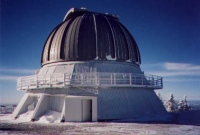
Astronomy, the oldest of the sciences, is currently enjoying one of the most fascinating periods in its long history, thanks to major developments in the fabrication of telescopes, for use both on Earth and in space, covering the electromagnetic spectrum from radio waves to gamma rays. In addition, modern astrophysics is an area central to important developments in numerical modelling.
In the midst of this astronomical revolution, the researchers in the Astronomy and Astrophysics Group are interested in a vast array of subjects, including:
- The development of the latest astronomical instrumentation (through the expertise of the Experimental Astrophysics Laboratory)
- Solar physics
- Stellar astrophysics
- Galactic and extragalactic astronomy
The researchers in the group have access to the Mont Mégantic Observatory and are regularly involved in observations that are among the most important in international astronomy. Many research projects use observation and data acquisition techniques, as well as theoretical analysis and modelling.
Biophysics
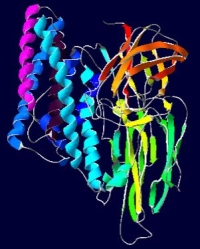
Modern biophysics is at the interface of biology and physics, where researchers are interested in the fundamental concepts responsible for the complex phenomena at the origin of life.
This branch of physics has received remarkable interest over the last few years, following the exceptional development of genomics and of biology in general. We now have solid experimental data allowing us to build quantitative theories like those in other areas of physics.
The biophysicists in the Department of Physics work in the Groupe d'étude des protéines membranaires (GÉPROM), a multidisciplinary collection of physicists, chemists, biochemists and physiologists. The main aim of GÉPROM's research is to understand the functioning of the proteins that permit the selective and controlled passage of ions and molecules through cellular membranes. Using advanced physics and genetic engineering techniques, it is possible to manipulate membrane proteins in order to understand their methods of operation.
Condensed matter physics and physics of materials
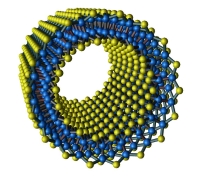
Condensed matter physics is a subject of growing interest that analyzes matter and endeavours to explain the complexity and the many phenomena that arise when atoms combine in a compact manner.
This is the physics of much modern technology, and is of great fundamental importance - just think of microelectronics, which has completely changed our lives. Today, another revolution is underway, that of nanoscience and nanotechnology, which raise a great number of fundamental questions of interest to condensed matter physicists.
Using a vast range of experimental, theoretical and numerical methods and approaches, the researchers in the Condensed Matter Physics Group attack many problems, including:
- Nonlinear and disordered systems
- Modelling and manufacturing the latest materials
- The growth and characterization of multilayer metals, super networks and heterostructures
- Ionic implantation
- Nanocalorimetric measurements
Particle physics
The aim of particle physics is to understand the structure of matter, as well as the creation of matter in the first instants of the universe. Paradoxically, solutions to the problems of the very small require increasingly massive equipment, used by large international teams of researchers. Particle physics also involves teamwork, on complex projects which endeavour to verify and complete the standard model.
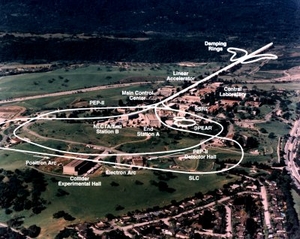
Researchers in the Particle Physics Group work on both experimental and theoretical problems, and collaborate closely on large international projects such as those at CERN (the OPAL and ATLAS experiments), Stanford (the BaBar experiment), TRIUMF and Sudbury (SNOlab). The group's many projects include the modelling of observations (phenomenology), the study of theoretical subjects such as solitons and field theory, and the PICASSO experiment, which was conceived and developed in the Department. It aims to detect dark matter in the universe, making a direct link with today's major cosmological questions.
Plasma physics
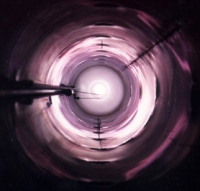
A boiling mixture of charged particles, plasmas can be considered the 4th state of matter, a state still poorly understood due to the often extreme physical conditions involved in the creation of a plasma, obtained from the transfer of energy from a gas, liquid, or solid. Often associated with nuclear fusion, plasmas are of far wider interest. Apart from the understanding of fundamental physics which their study can provide, laboratory plasmas are extraordinary tools for many industrial processes.
With diverse funding from both government and industry, the Plasma Physics Group is involved in research activities in plasma source design, modelling and applications. Current projects include:
- Nanometric engraving of ferroelectric materials
- Laser-induced plasma spectroscopy
- Sterilization of medical instruments by plasma
- Destruction of greenhouse gases
These experimental activities also involve the development of models, which are indispensable to the interpretation of the experimental results and make it possible to optimize sources for a given application.
Numerical physics

Having played a key role in discovering and explaining many phenomena, numerical physics is now taking its place beside the traditional experimental and theoretical approaches in our understanding of Nature's laws.
Physicists have developed most of the numerical tools used today in science and engineering, which have been involved in developing and using simulation algorithms, data analysis and image processing. This approach is used in every area of physics. It is often a "virtual laboratory" that allows us to predict properties of new nanostructural materials, the formation and evolution of stars, and the flows of debris and avalanches. It can also be used in theories that are difficult to solve exactly, help to study complex systems, model the solar cycle, analyze wavelet signals, etc.
Many researchers in the Department of Physics are active in numerical physics, both in developing new algorithms and in applying powerful methods. Some are members of Calcul Québec, which has powerful supercomputers at the cutting edge of computer technology.
Medical physics
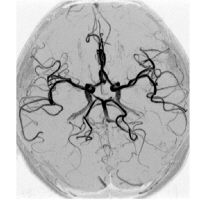
Physicists involved in the development of medical science have been responsible for many major advances in the field, from the discovery of X-rays to the development of the latest scanners.
Medical physics is an area where scientific research often contributes directly to the common good.
In association with researchers at the Centre hospitalier de l'Université de Montréal (in French) (CHUM), the Department of Physics offers a Master's in Medical Physics. The current program concentrates on two main themes: medical imagery and radiotherapy. This involves theoretical courses and a practical research internship. There are scholarships specifically for this area of research and exciting jobs in the health sector: two excellent reasons to choose this program!
Mathematical physics
Physics is a science based on mathematics. Research in mathematical physics looks at the fundamental aspects of physics and focuses on questions involving the strength and rigour of the principles governing mathematical laws. We use topology, differential equations, quantum information and many other concepts to solve the key problems in modern physics.
Mathematical physics researchers are affiliated with the Centre de recherches mathématiques, an international centre located at the Université de Montréal that brings together mathematical research efforts in Quebec.
A
- Abundance, chemical composition 2
- Accelerators 2
- Algebraic structures 1
- Alzheimer’s Disease 1
- Amorphous semiconductors, metals, and alloys 4
- Artificial intelligence 3
- Astronomical and space-research instrumentation 5
- ATLAS experiment (LHC) 2
- Atmospheres of fluid planets 1
- Atmospheres of solid surface planets 2
- Atom, molecule, and ion scattering 3
- Atomic, molecular, and ion beam impact and interactions with surfaces 1
B
C
- Canada 1
- Cancer Diagnosis and Detection 1
- Characteristics and properties of external galaxies and extragalactic objects 1
- Charge conjugation and parity symmetries 1
- Charged-particle beams 3
- Chemical vapor deposition 1
- Circumstellar shells 2
- Classical and semiclassical techniques in gauge field theories 1
- Classical general relativity 2
- Classical spin models 1
- Climate change policies 1
- Collective excitations in electronic structure of nanoscale materials 1
- Colloids 1
- Computational techniques, simulation 5
- Condensed matter physics 6
- Condensed matter: elecronic structure, electrical, magnetic, and optical properties 5
- Condensed matter: structural, mechanical and thermal properties 1
- Conformational changes in biomolecules dynamics 3
- Continuous media and classical fields in curved spacetime 1
- Corona 3
- Corotating streams 1
- Crystal-field theory and spin Hamiltonians 1
D
- Dark matter 4
- Decays of pi mesons 1
- Decoherence, open systems, quantum statistical methods 1
- Defects and impurities in thin films: doping, implantation 2
- Density functional theory 1
- Deposition by sputtering 1
- Disordered solids 1
- Dosimetry 3
- Dosimetry / exposure assessment 1
- Dynamics of biomolecules 2
E
- Eclipses, transits, and occultations 1
- Electric discharge in liquids and solids 1
- Electron-phonon interactions 3
- Electronic and electrical properties of biomolecules 1
- Electronic transport in condensed matter 2
- Electrophysiology 1
- Electroweak interactions 2
- Emission-line stars (Of, Be, LBV, Wolf-Rayet stars) 1
- Energy resources 2
- Energy storage technologies 1
- Equation of state of neutron-star matter 1
- Excitons and related phenomena 1
- Extended classical solutions, cosmic strings, domains walls, textures 1
- Extensions of the Standard Model 5
- Extrasolar planetary systems 8
F
- Faint blue stars, White dwarfs, degenerate stars, nuclei of planetary nebulae 3
- Fibrils (amyloids) 1
- Field theory 1
- Fluid dynamics 1
- Fluorescence spectroscopy 1
- Fractional statistics sytems (anyons, etc.) 2
- Functional analytical methods 1
- Fundamental aspects of astrophysics 7
- Fundamental astronomy 13
G
H
I
J
M
- Machine learning and deep learning 4
- Magnetic properties and materials 2
- Magnetohydrodynamics and plasmas 1
- Mass loss and stellar winds 5
- Materials science 11
- Mathematical methods in physics 3
- Membrane proteins 1
- Metrology 1
- Micro- and nano-electromechanical systems (MEMS/NEMS) and devices 1
- Micro- and nanofabrication 1
- Molecular clouds, H2 clouds, dense clouds, and dark clouds 1
- Molecular dynamics and particle methods 4
- Monte Carlo simulations 3
- Muon spin rotation and relaxation 1
N
- Nanoelectronic devices 3
- Nanoscale materials and structures: fabrication and characterization 10
- Neuroscience 1
- Neutrino, muon, pion and other elementary particle detectors 2
- Neutron scattering 1
- New materials: theory, design, and fabrication 2
- Nuclear astrophysics 2
- Nuclear physics 2
- Nuclear physics aspects of supernovae 1
- Nucleic Acids 1
- Numerical approximation and analysis 2
- Numerical simulation 2
O
P
- Photoconduction and photovoltaic effects 2
- Photography and photometry 3
- Photoluminescence of III-V and II-VI semiconductors 1
- Physical radiation effects, radiation damage 2
- Physics of elementary particles and fields 10
- Physics of plasmas and electric discharges 4
- Plasma diagnostic techniques and instrumentation 3
- Plasma etching and cleaning 3
- Plasma production and heating by laser beams 2
- Plasma-based ion implantation and deposition 1
- Plasma-material interactions 3
- Polarimetry 2
- Protein folding: thermodynamics, statistical mechanics, models, and pathways 1
- Protein-Ligand Interactions 1
- Proteins 1
- Pulsations, oscillations, and stellar seismology 4
Q
R
S
- Scattering of atoms and molecules 2
- Science and government 1
- Science and society 3
- Self-gravitating systems 1
- Self-organized systems 1
- Semiclassical theories and applications of quantum mechanics 1
- Single-molecule techniques 1
- Solar activity 3
- Solar cycles 3
- Solar flares 3
- Solar magnetism 3
- Solar physics 4
- Solid-state detectors 5
- Solitons 2
- Spectroscopy and spectrophotometry 7
- Spontaneous breaking of gauge symmetries 1
- Standard-model Higgs bosons 3
- Star formation 3
- Stellar atmospheres 3
- Stellar characteristics and properties 5
- Stellar rotation 2
- Stellar structure, interiors, evolution, nucleosynthesis, ages 4
- Storage rings and colliders 2
- Strongly correlated electron systems 1
- Structure of biomolecules 3
- Superconductivity 3
- Supergiant stars 2
- Supersymmetric models 2
- Symmetry and conservation laws 3
T
- Theory of quantized fields 3
- Thermal convection 1
- Thermal properties of condensed matter 1
- Thermal properties of small particles, nanocrystals, nanotubes and other related systems 2
- Time resolved spectroscopy 1
- Time series analysis, time variability 2
- Top quarks 1
- Transport, including channels, pores, and lateral diffusion 1